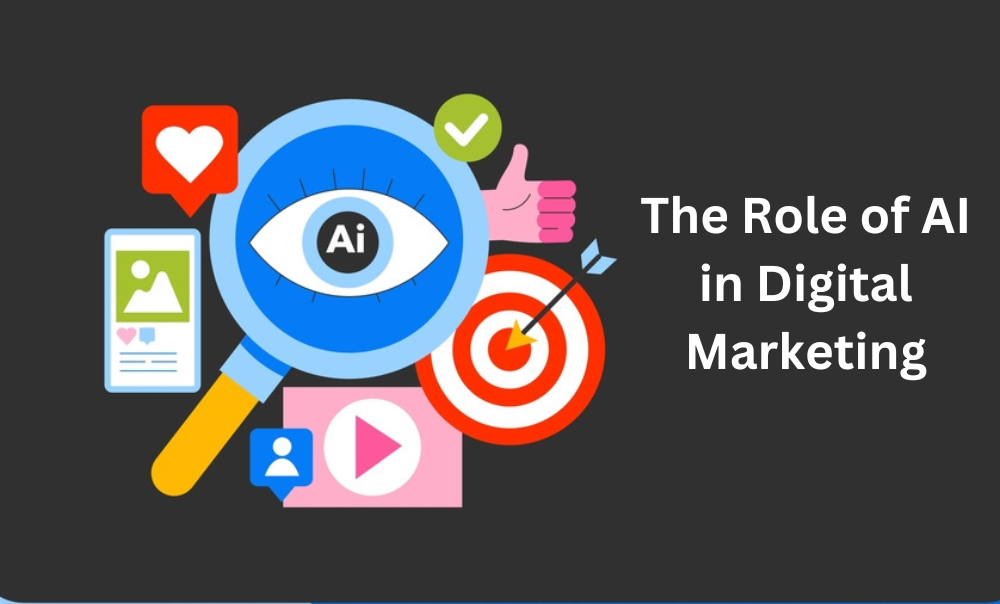In the fast-paced landscape of digital marketing, staying ahead of the curve is imperative for businesses to remain competitive, especially in dynamic hubs like Dubai. With the advent of Artificial Intelligence (AI), the future of digital marketing in Dubai is being reshaped, offering unprecedented opportunities for brands to connect with their audiences in more personalized and impactful ways.

The Digital Marketing Sector in Dubai: A Thriving Hub
Dubai, often dubbed the “City of the Future,” boasts a vibrant digital marketing ecosystem characterized by innovation and diversity. As a global business hub, Dubai attracts entrepreneurs, start-ups, and multinational corporations alike, driving robust growth in the digital marketing sector. With its tech-savvy population and penchant for luxury lifestyles, Dubai presents a fertile ground for pioneering digital marketing strategies.

The Role of AI in Digital Marketing –
At the heart of this digital transformation lies Artificial Intelligence, a game-changer that is revolutionizing the way brands engage with consumers. AI-powered tools and technologies are enabling marketers to analyze vast amounts of data, uncover actionable insights, and deliver hyper-targeted campaigns with unprecedented precision. In Dubai’s dynamic market, AI is proving to be the cornerstone of innovation, driving efficiency, and effectiveness across the digital marketing spectrum.
Personalized Customer Experiences –
One of the most significant impacts of AI in digital marketing is its ability to personalize customer experiences at scale. By leveraging machine learning algorithms, marketers can analyze customer behaviour, preferences, and intent in real-time, enabling them to deliver tailored content and recommendations that resonate with individual consumers. In Dubai, where consumers crave personalized interactions and premium experiences, AI-powered marketing campaigns are gaining traction, driving higher engagement and conversion rates.
Predictive Analytics and Forecasting –
AI is also empowering marketers in Dubai to make data-driven decisions through predictive analytics and forecasting. By analysing historical data and market trends, AI algorithms can anticipate future consumer behaviour and market dynamics, enabling marketers to optimize their strategies and allocate resources more effectively. From predicting demand for luxury goods to forecasting trends in the hospitality industry, AI is providing invaluable insights that drive business growth and competitiveness in Dubai’s digital marketplace.
Chatbots and Virtual Assistants –
In the realm of customer service and engagement, AI-driven chatbots and virtual assistants are redefining the way brands interact with their audiences. By harnessing natural language processing and machine learning capabilities, chatbots can deliver personalized assistance, answer queries, and provide recommendations in real-time, enhancing the overall customer experience. In Dubai, where customer service excellence is paramount, AI-powered chatbots are becoming indispensable tools for brands looking to engage with consumers effectively across multiple channels.
Hyper-Targeted Advertising –
AI is also reshaping the landscape of digital advertising in Dubai, enabling marketers to deliver hyper-targeted campaigns that resonate with specific audience segments. By analysing demographic data, browsing behaviour, and social media engagement patterns, AI algorithms can identify high-value prospects and deliver personalized ads across various channels, from social media platforms to search engines. This level of precision targeting allows brands to maximize their advertising ROI and drive tangible business results in Dubai’s competitive marketplace.
The Future of Digital Marketing in Dubai –
As AI continues to evolve and mature, its role in shaping the future of digital marketing in Dubai will only become more pronounced. From predictive analytics to personalized customer experiences, AI-driven technologies will continue to drive innovation and efficiency across the digital marketing ecosystem. In Dubai’s dynamic and diverse market, embracing AI-powered strategies will be essential for brands looking to stay ahead of the curve and unlock new opportunities for growth and success.
Expanding Horizons with AI –
Looking ahead, the integration of AI into digital marketing strategies in Dubai will continue to evolve, presenting new opportunities and challenges for businesses. With advancements in AI technologies such as natural language processing, image recognition, and predictive analytics, marketers will have unprecedented capabilities to understand and engage with consumers on a deeper level. Whether it’s through personalized recommendations, AI-powered chatbots, or hyper-targeted advertising, AI will play a central role in shaping the Digital marketing sector in Dubai and beyond. As businesses embrace AI-driven strategies and technologies, they will be better positioned to navigate the complexities of the digital landscape, drive innovation, and deliver exceptional experiences that resonate with consumers in Dubai’s dynamic marketplace.
In conclusion, the Role of AI in Digital Marketing is intrinsically linked to the transformative power of AI. By harnessing the AI-driven technologies and strategies, brands can create more personalized, engaging, and impactful experiences that resonate with consumers in Dubai’s ever-evolving marketplace. As AI continues to drive innovation and disruption in the digital marketing landscape, the possibilities for brands in Dubai are limitless, paving the way for a future where creativity, data, and technology converge to shape the next generation of marketing excellence.







